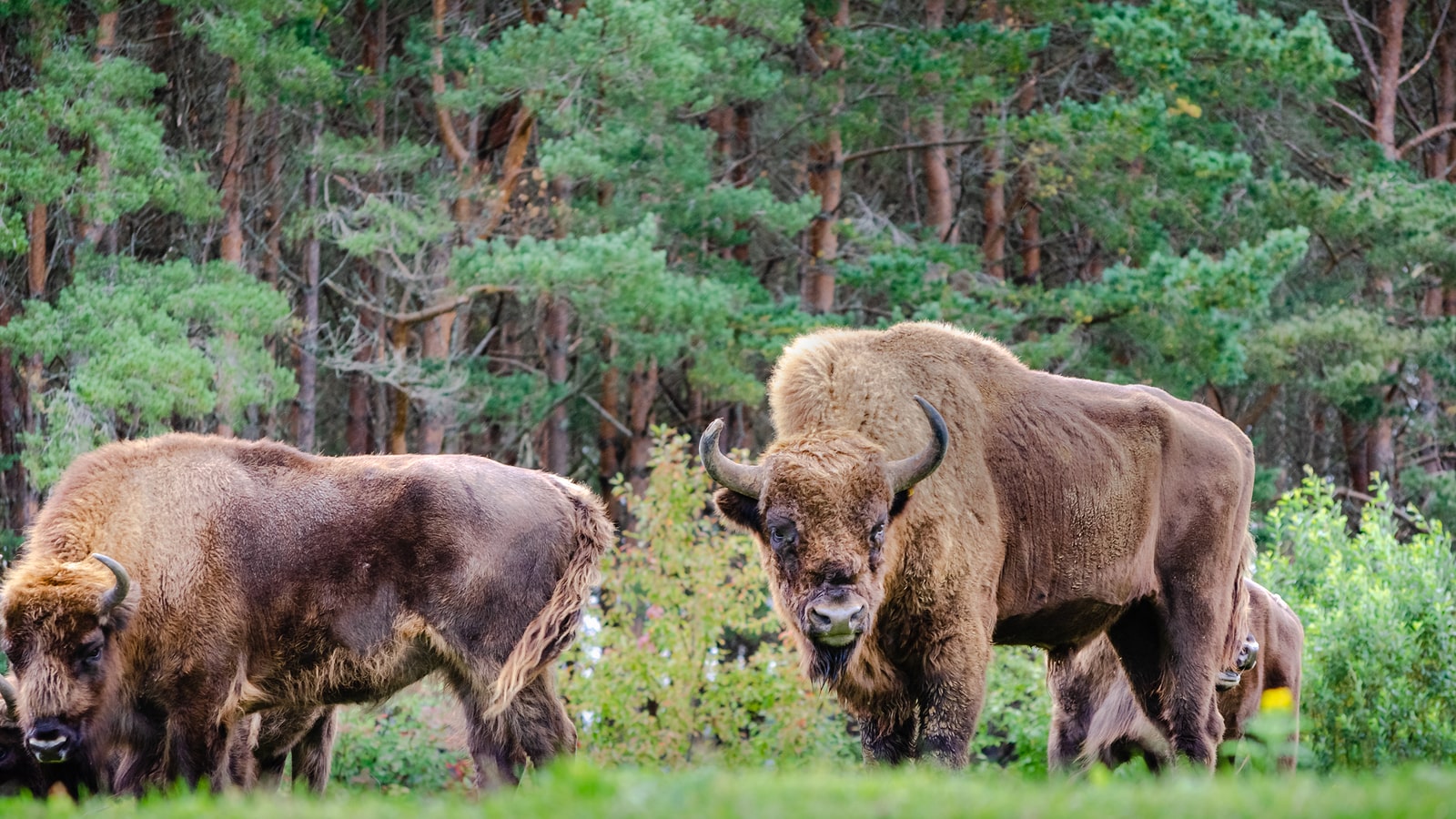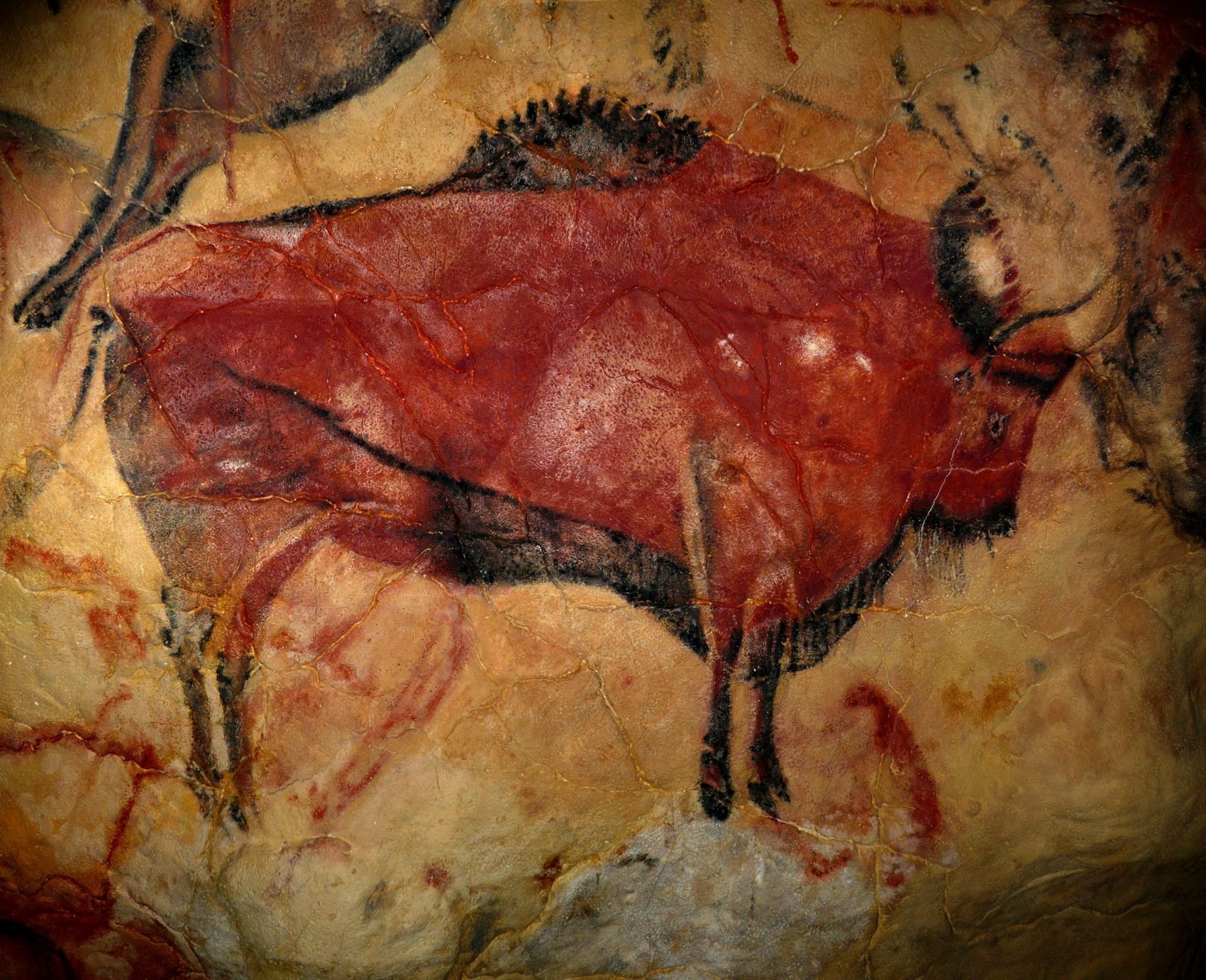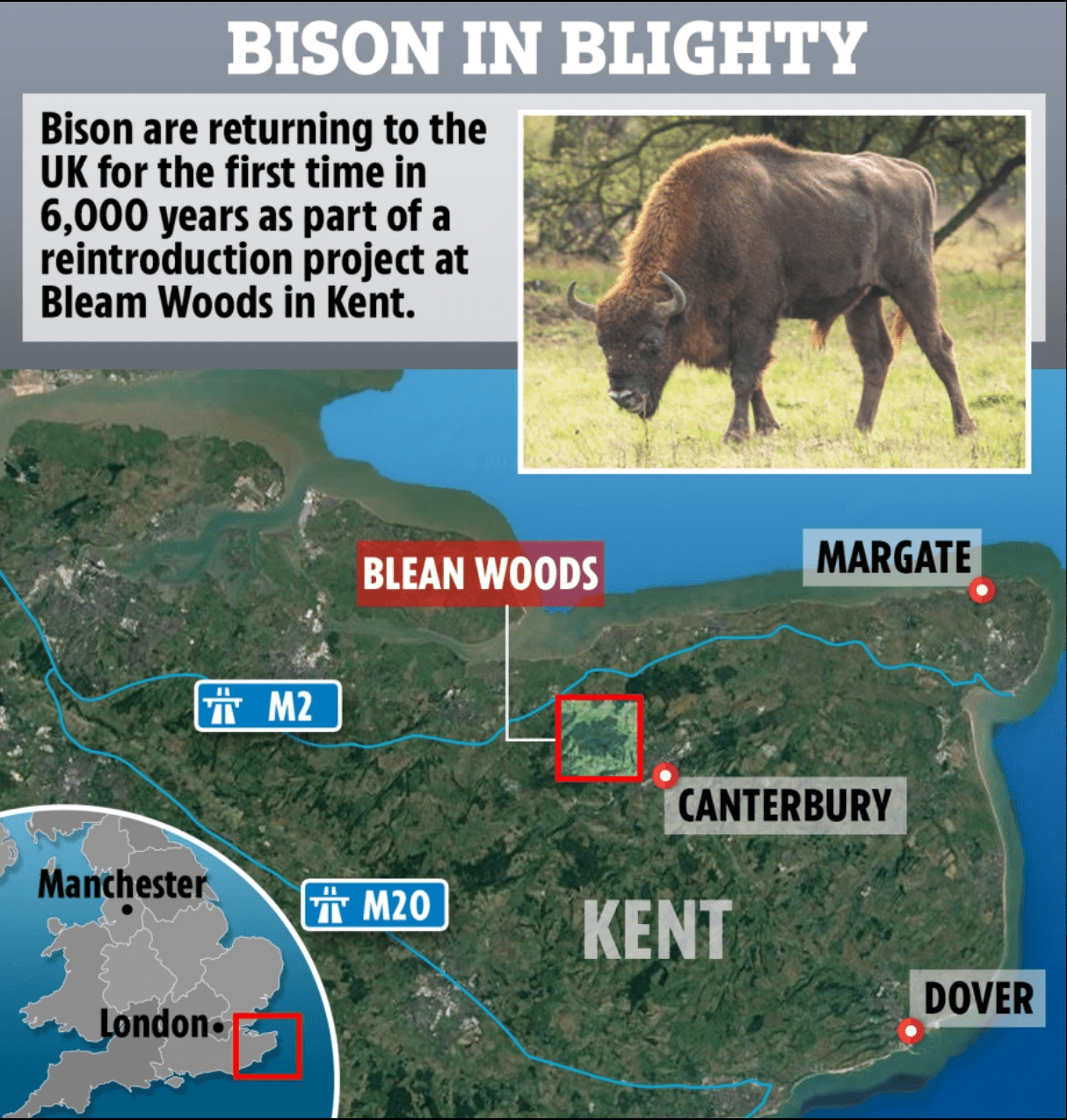
European Bison are returning to the UK for the first time in 6,000 years with the mission to restore ancient habitats and wildlife. This will be done through the Wilder Blean project led by Kent Wildlife Trust and the Wildwood Trust to help manage Blean Woods near Canterbury.
The £1m project will reintroduce a wild herd of European bison in Kent in the spring of 2022. This project will help to secure the future of an endangered species. However, Bison will also naturally regenerate a former pine wood plantation by killing off trees. This creates a healthy mix of woodland, scrubs, and glades, boosting insects, birds, and plant lives.
“The Wilder Blean project will provide that a wilder, nature-based solution is the right one to tackle the climate and nature crisis we now face. Using missing keystone species like bison to restore natural processes to habitats is the key to creating bio-abundance in our landscape.”
– Said, Paul Hadaway, from Kent Wildlife Trust.

European bison are the closest living relative to the ancient steppe bison that once roamed Britain. The steppe bison or steppe wisent is an extinct species of bison that was once found on the mammoth steppe during the Quaternary. The steppe bison is thought to have roamed the UK until about 6,000 years ago when hunting and changes in habitat led to its global extinction.
Adult males can weigh up to a tonne, but bison are peaceful, according to the experts, and no other species could perform the job of engineering the habitat in quite the same way.
“They’re enormous, but what is amazing is how they blend into their background and they’re quite docile really.”
– Said Stan Smith, of Kent Wildlife Trust.

The project, funded by the People’s Postcode Lottery Dream Fund, will cover 1,236 acres, with the bison first placed in an area of 371 acres where there are no right-of-way trails. Once the bison are settled, the public will be able to visit the area with rangers and watch the animals from viewing platforms.
Bison kill selected trees by eating their bark or rubbing against them to remove their thick winter fur. This creates a feast of dead wood for insects, which provide food for birds. Tree felling also creates sunny clearings where native plants can thrive. The trust expects nightingales and turtle doves to be among the beneficiaries of the bison’s “ecosystem engineering”.
“The partners in the Kent project have long dreamed of restoring the true wild woodlands that have been missing from England for too long.”
– Said Paul Whitfield, of Wildwood Trust.




